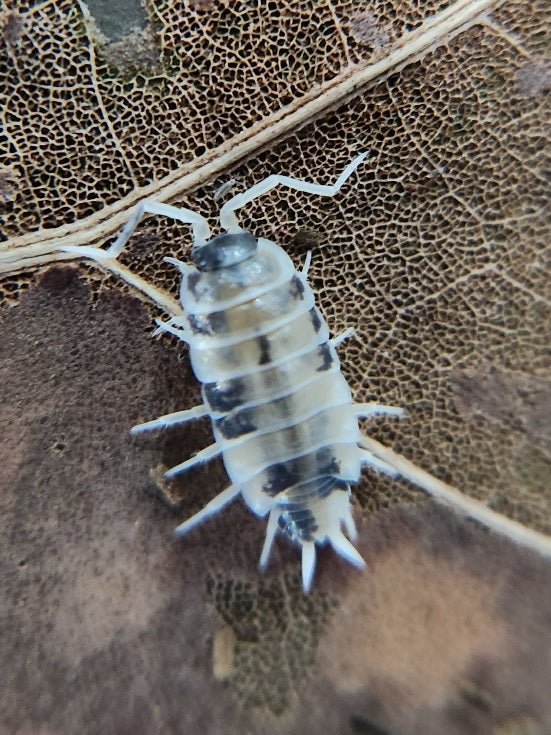Botanical seed pods offer a multitude of benefits across bioactive terrariums, isopod enclosures, and aquariums, contributing to both the aesthetic appeal and the overall health and functionality of these enclosed ecosystems.
Here's a breakdown of their advantages:
For Bioactive Terrariums & Isopod Enclosures:
- Natural Decor and Aesthetic Appeal: Seed pods provide a natural, rustic, and visually interesting element, mimicking a forest floor or natural landscape. Their varied shapes, sizes, and textures add depth and complexity to the enclosure.
- Hiding Spots and Shelter: The nooks and crannies within seed pods offer excellent hiding spots and secure retreats for small inhabitants like isopods, springtails, dart frogs, and other small reptiles and amphibians. This reduces stress and promotes natural behaviors.
- Food Source for Microfauna: As seed pods naturally decompose, they become a valuable food source for detritivores such as isopods and springtails (the "cleanup crew"). This helps to maintain a healthy ecosystem by breaking down organic matter and recycling nutrients.
- Humidity Retention: Many seed pods, due to their porous nature, can absorb and slowly release moisture, helping to maintain stable humidity levels within the terrarium, which is crucial for many inhabitants.
- Substrate Enrichment: As they break down, seed pods release beneficial nutrients into the substrate, enriching the soil and promoting a thriving environment for plants and microorganisms.
- Microbial Hotspots: The dense, porous nature of seed pods creates ideal surfaces for the growth of beneficial bacteria and fungi, which are essential components of a healthy bioactive system and contribute to the decomposition process.
- Encourages Natural Behaviors: The presence of botanicals stimulates foraging, hiding, and exploring behaviors in the inhabitants, enriching their environment.
- Biodegradable and Sustainable: Being natural products, seed pods decompose naturally and are an eco-friendly choice for habitat decoration.
For Aquariums:
- Natural Aesthetics: Seed pods add a unique and natural look to aquariums, particularly those aiming for a blackwater or biotope aesthetic, replicating the appearance of natural aquatic environments.
-
Tannin Release and "Blackwater" Effect: Many seed pods, when submerged, slowly release tannins and humic acids into the water. These compounds can:
- Lower pH and Soften Water: This is beneficial for many fish species that originate from soft, acidic, blackwater environments (e.g., Bettas, Angelfish, Dwarf Cichlids, some Tetras).
- Anti-Bacterial and Anti-Fungal Properties: Tannins have natural antiseptic qualities that can help prevent bacterial and fungal infections in fish and protect fish eggs.
- Enhance Fish Coloration: The "tea-stained" water created by tannins can bring out more vibrant colors in certain fish.
- Reduce Stress: The darker water can create a more natural and less stressful environment for light-sensitive fish.
- Biofilm Development: Seed pods provide a large surface area for the growth of beneficial biofilm (periphyton), which serves as a natural food source for shrimp, snails, fry, and grazing fish.
- Hiding and Breeding Spots: The cavities and crevices within seed pods offer excellent hiding places and potential breeding sites for fish and shrimp, encouraging natural spawning behaviors.
- Enrichment: Similar to terrariums, seed pods provide an enriching element that encourages natural behaviors like exploring and foraging for food.
- Natural Filtration: The surfaces of seed pods can also support beneficial bacteria that contribute to the nitrogen cycle, aiding in natural biological filtration.
Important Considerations:
- Preparation is Key for Aquariums: Always properly prepare seed pods before adding them to your aquarium. This typically involves boiling them for 10-20 minutes to remove excess tannins (especially for aquariums where a strong tint isn't desired) and help them sink. Soaking overnight can also be beneficial to help the pods become waterlogged.
- Monitor Water Parameters (Aquariums): When adding botanicals to an aquarium, monitor water parameters like pH and hardness, as they can be influenced by the release of tannins.
- Mold Development (Terrariums/Isopods): While beneficial, some users report initial mold growth on seed pods in very moist environments. This is usually managed by wiping any excessive mold off of the seed pods. Once the seed pods adjust to the new ecosystem, the mold will run its course, and you will have beautiful seed pods in your enclosure.
By incorporating botanical seed pods, hobbyists can create more natural, enriching, and self-sustaining environments for their beloved animals.



